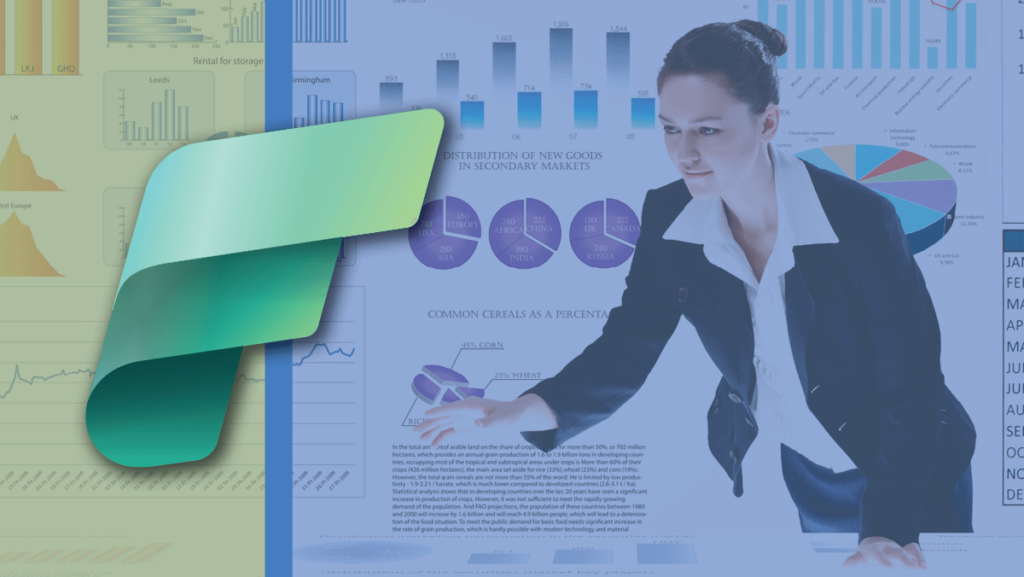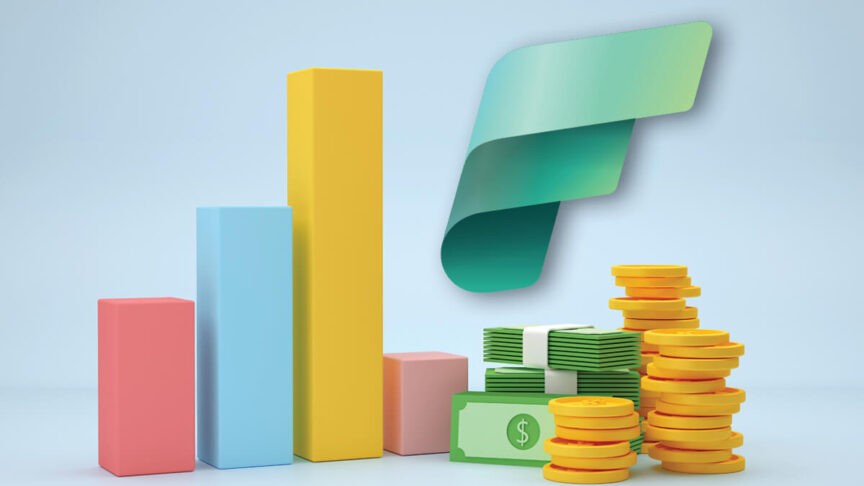
What is Microsoft Fabric?
Think of Microsoft Fabric as an all-in-one toolkit for handling data. It combines Power BI, Azure Data Factory, and Azure Synapse into one powerful platform so you can make sense of your data faster and easier. Whether you’re working with massive data sets or trying to get quick business insights, Fabric is designed to simplify the process and help you take action.
Who is Microsoft Fabric For?
Microsoft Fabric is built for anyone looking to make smarter decisions with data—whether you are part of a small business or a large enterprise.
- Cross-functional teams get the advantage of a centralized hub of information that brings them together to collaborate in real time.
- Remote and hybrid teams benefit from flexibility and cloud-first design helping everyone stay connected and work effectively, regardless of physical location.
- Project managers use Fabric’s automation and communication features to streamline workflows and track progress without juggling multiple tools.
- HR teams rely on it for smoother onboarding and communication with new hires.
- Sales and customer service teams use it to track performance and deliver optimized, data-driven customer experiences.
What Can You Do With Microsoft Fabric?
Microsoft Fabric is built to help you do more with your data—faster, easier, and with less friction. Whether you’re cleaning data, building reports, or running advanced analytics, Fabric pulls everything into one place so teams can stay focused on solving business problems instead of managing tools.
You can use Fabric to bring in data from across your systems—think CRMs, ERPs, apps, and files—and prep it for analysis with powerful tools like Data Factory and Synapse. Once it’s in, you can store everything in OneLake, analyze it with Power BI, and even apply machine learning or real-time analytics with just a few clicks.
Because all of these services are connected within a single platform, you don’t waste time hopping between different tools. Fabric gives data engineers, analysts, and scientists a common environment to collaborate, build, and deploy solutions quickly. And with built-in support for Python, Apache Spark, and Delta Lake, your team can use the tools and languages they already know.
Microsoft Fabric is a BIG DEAL! Modern data analytics is now turbo-charged by reducing time to build and accelerating business value. Although the platform is still in preview, we are beginning to build custom solutions that give us the impression that the Fabric future is looking sweet.
Jason Fife, Data Engineering Manager at JourneyTeam
Benefits of Microsoft Fabric
Undoubtedly, the biggest benefit of Fabric is that managing data becomes far less complicated. By consolidating sources like CRMs, ERPs, and spreadsheets, Fabric simplifies how organizations collect, clean, and organize information for analysis.
Automation is another major win. Fabric helps streamline repetitive tasks and workflows so your team can focus on strategic work instead of manual processes. And because AI and security are baked into the platform, users have powerful tools to safely analyze data, surface insights, and predict outcomes without needing to write complex code or add third-party security tools.
Lastly, since Fabric is cloud-native, it grows with your business. Whether you need more storage, processing power, or users, the platform scales up or down without sacrificing performance. And because the platform is unified, costs related to software licensing, IT overhead, and data storage can be reduced. Continue reading this article to learn more about pricing.
Tip: Watch our on-demand webinar to explore how Microsoft Fabric, Power BI, and Azure can help you build an integrated, scalable data strategy that supports AI and advanced analytics. We cover key industry trends, best practices, and real-world success stories that showcase the power of unified data management.
Fabric Services: A Holistic Value-Add

Microsoft Fabric extends its arms through a spectrum of services, each serving a distinct purpose in the realm of data analytics, engineering, and management. Let’s look at the services within Microsoft Fabric:
| Fabric Component | What it Does | What’s the Value? |
| Data Factory | Orchestrates and automates data movement and transformation | Provides efficient data pipeline management and scalable ETL processes for structured and unstructured data |
| Data Engineering | Provides scalable data pipelines that extract, transform, and load (ETL) data from various sources into storage platforms | Enables businesses to process large amounts of data quickly and securely |
| Power BI | Creates interactive visualizations and reports | Empowers users to analyze data and share insights across the organization |
| Data Science | Enables building and deploying machine learning models | Facilitates predictive analytics and intelligent applications |
| Data Warehouse | Stores and manages large amounts of structured data for analysis and reporting | Enhances data accessibility and supports advanced analytics |
| Fabric Platform | Integrates Power BI, Azure Synapse Analytics, and Azure Data Factory | Simplifies data management and analytics in a single environment |
| AutoML | Automates machine learning workflow | Optimizes and trains machine learning models automatically |
| Fabric Data Agent | Provides AI capabilities across all paid SKUs | Enhances data analytics with AI-driven insights |
How to Get Started With Fabric (Without Getting Overwhelmed)
If you’re thinking about trying Fabric, here’s a straightforward plan to get going:
- Assess Your Needs– What do you want to do with your data? Begin by identifying your analytics requirements. One way to identify those requirements is by creating a data strategy roadmap. This is a simple way to outline an organization’s goals, and how data can help you reach them.
- Understand Licensing– Familiarize yourself with the options for Fabric licensing and choose the one that makes sense for your business. For a clear explanation, see our in-depth blog on how to estimate Fabric capacity planning.
- Onboard Smartly– JourneyTeam offers comprehensive onboarding support to help you integrate Microsoft Fabric into your existing data infrastructure. You can rely on our expertise to ensure a smooth transition.
- Train Your Team– Equip your analysts and engineers with training resources so they can get productive fast. Start Small– Consider starting with a small pilot project to test Microsoft Fabric in your environment. This allows you to validate its benefits and performance before scaling up.
- Migrate Data Carefully– If you’re transitioning from other data analytics solutions, plan your data migration carefully to ensure a seamless transfer of existing data to Microsoft Fabric.
- Integrate Your Tools– Fabric plays well with other Microsoft apps so make the most of those connections. Explore how Microsoft Fabric integrates with your existing tools and processes.
- Optimize Over Time– Leverage support services and assessments to ensure ongoing performance and security. Regularly review your usage and optimize your configuration as needed.
Ready to See What Microsoft Fabric Can Do For Your Business?
Whether you’re exploring your first analytics project or looking to unify your entire data strategy, we’re here to help. Reach out to JourneyTeam’s data and analytics experts for a personalized walkthrough or to talk about how Fabric can fit into your organization’s goals.
Contact Us Today
Let’s turn your data into real results!


